Click each project to view / hide details:
- NMNAT2-SARM1 signaling in traumatic axonopathy in the corticospinal and visual pathway; NMNAT2-SARM1 neurochemistry; genetic and pharmacological interventions for prevention and treatment of pathology and symptoms
- DLK-JNK signaling cascade as mediator of acute and chronic effects of traumatic axonal injury in perikarya and axons of the visual and corticospinal pathway; genetic and pharmacological interventions
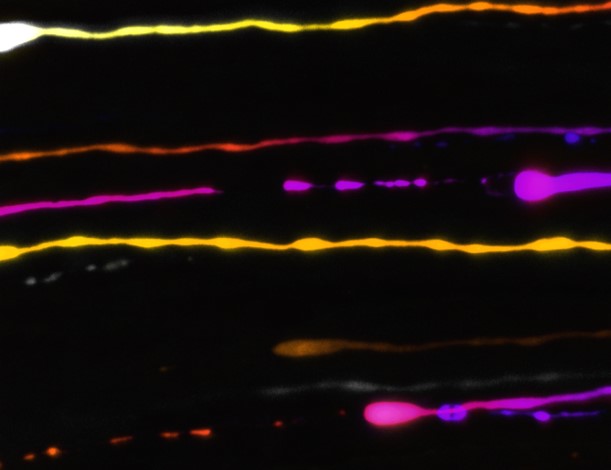
Acceleration injury in the optic tract generates a variety of pathological configurations including end-bulbs, spindle-like axonal swellings and more classical Wallerian-type fragmentation. It is unclear if the above are part of the same continuum or separate biological entities.
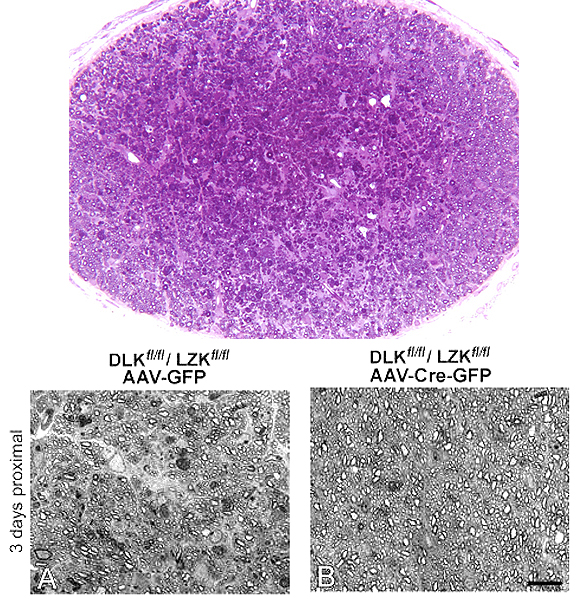
Wallerian degeneration in the optic nerve after acceleration TBI (top). Knocking out DLK and LZK protects the proximal axonal segments of injured axons (bottom)
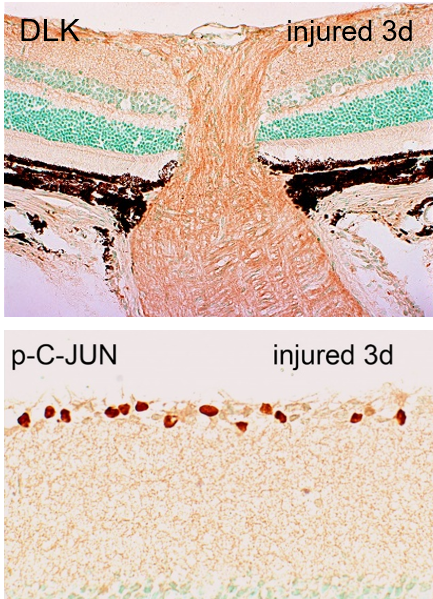
Induction of the dual lineage kinase DLK (top) and downstream phosphorylation of c-JUN (bottom) in injured optic nerve and retina
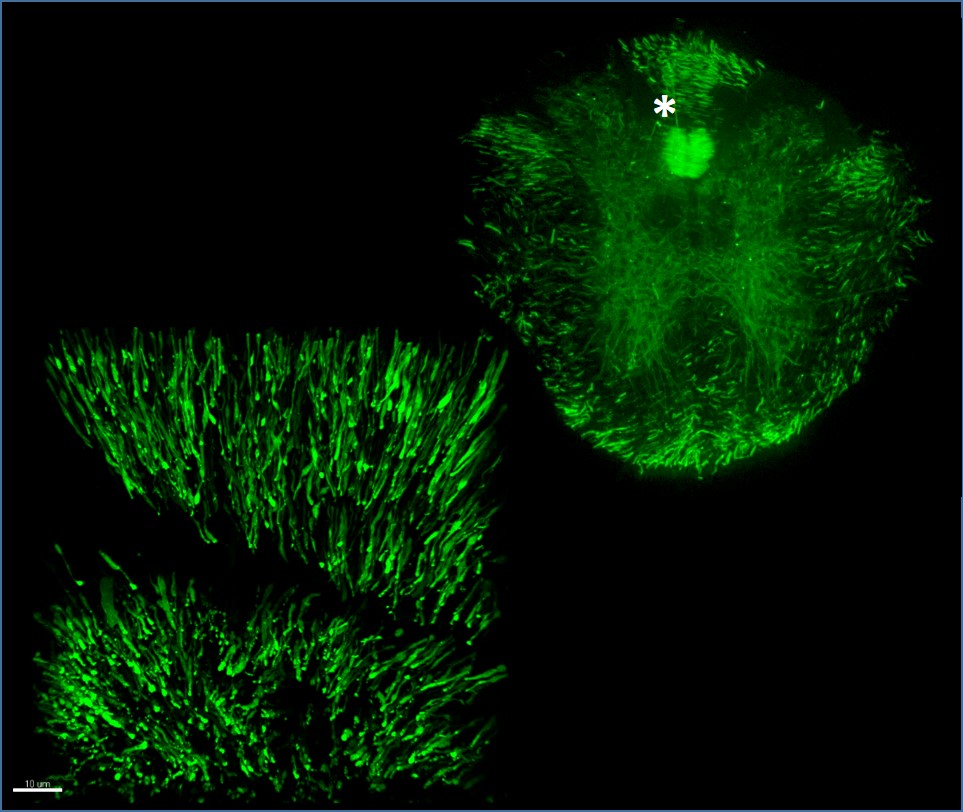
High-resolution Airyscan rendition of corticospinal axons (bottom left) from the YFP-H mouse that shows an excellent visualization of the corticospinal tract (top right)
- Effects of NAMPT inhibitors to prevent Wallerian degeneration–mechanisms
- Effects of DLK inhibitors to prevent Wallerian degeneration—mechanisms
- Effects of other interventions, i.e. NMPT inhibitors plus NaR
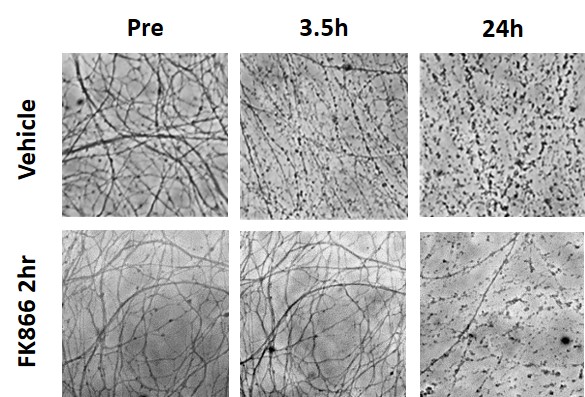
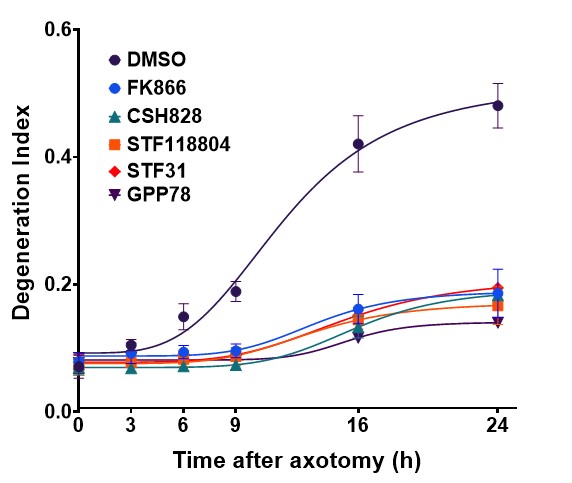
Different classes of NMPT inhibitors protect axotomized axons from Wallerian degeneration. DMSO is vehicle.
- Neuropathological characterization of behind-helmet blunt TBI in pigs, with emphasis on meningeal and parenchymal macro- and micro-hemorrhages and diffuse axonal injury; correlations among impact severity, meningeal and parenchymal pathology and clinical outcomes

Diffuse axonal injury in the medullary tegmentum in a pig that became critical after ballistic trauma to the head (APP)
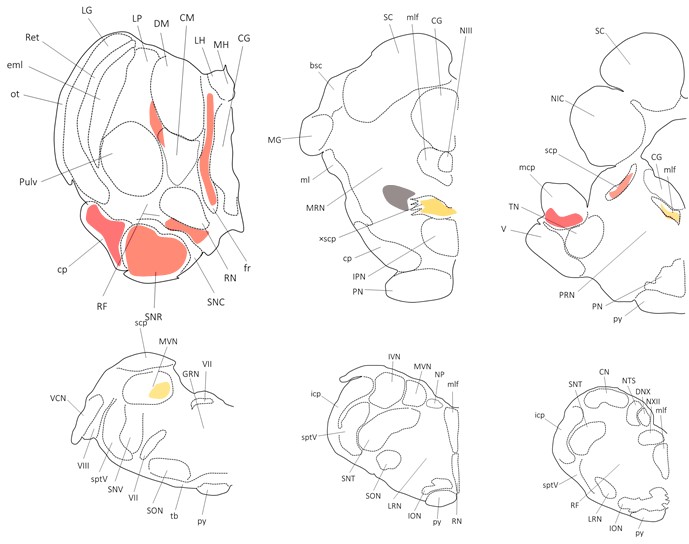
distribution map of brain stem lesions in another case
- Exploration of Frequency Following Response as a specific neurophysiological/audiological marker of concussion; predictive modeling using machine learning classifiers; correlations with neuropathology and clinical outcomes
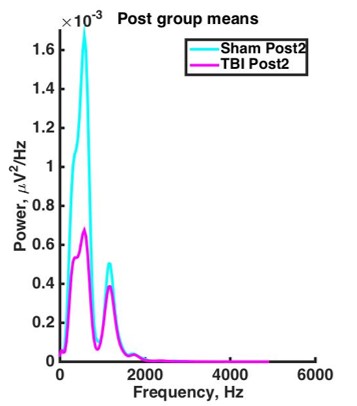
Differences in auditory brain response between normal (light blue) and TBI subjects (purple) based on frequency domain transform (with Amanda Lauer and Clara Scholl)
- Generation of second-generation models of concussion (founded on the classical Marmarou paradigm) that allow concomitant dialing of impact and acceleration and related measurements with minimal experimenter involvement
- Neuropathology of the cortical frontal and subcortical connectome in contusions and diffuse axonal injury: retrograde and transsynaptic neuronal changes signifying injury and degeneration
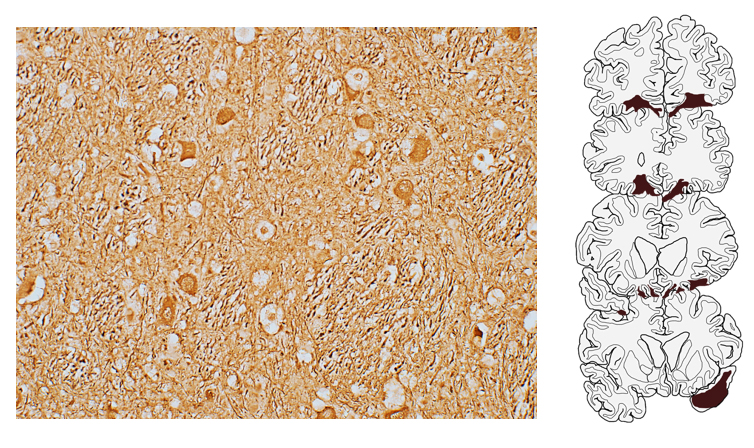
Thalamic degeneration (SMI310 staining) after contusions in orbitofrontal and temporopolar cortex indicated on the right
